Physical Address
304 North Cardinal St.
Dorchester Center, MA 02124
Heavily T2-weighted coronal oblique fast spin-echo sequence to obtain source data (aligned along the plane of the common bile duct [CBD])
Stationary water appears as areas of high SI and adjacent soft tissue is low SI (therefore it is not reliant on contrast excretion and can be used in jaundiced patients)
Fasting reduces any unwanted signal from the adjacent intestine
Breath-hold or non-breath-hold (respiratory triggered) imaging
Source data allows MIP reformats to be generated (highlighting fluid-filled structures) – usually a number of coronal MIP reformats over 180°
Secretin: this stimulates exocrine pancreatic secretion, distending the pancreatic duct and improving its visualization (acts immediately, returning to baseline at 10 min)
Functional MR cholangiography: using delayed imaging at 30–60 min with the hepatobiliary excreted contrast agents Gd-EOB-DTPA (Primovist) or Gd-BOPTA (MultiHance)
Uses: liver donor transplant work-up ▸ the assessment of bile leaks and biliary communication with cysts ▸ the demonstration of segmental obstruction
Normal morphology: only central intrahepatic ducts are normally seen (≤3 mm) ▸ extrahepatic ducts ≤7 mm (CBD up to 10 mm post cholecystectomy) ▸ pancreatic duct ≤3 mm ▸ accessory pancreatic duct in 45%
Right posterior hepatic duct (segments VI/VII): almost horizontal course
Right anterior hepatic duct (segments V/VIII): more vertical course
Left hepatic duct (segments II–IV): joins the right to form the common hepatic duct ▸ separate drainage of segment I
Cystic duct insertion into common hepatic duct: right lateral (50%) ▸ anterior (30%) ▸ posterior (20%)
Common variants: an aberrant right posterior duct draining into the common hepatic duct or cystic duct ▸ drainage of the right anterior or posterior duct into the left hepatic duct ▸ a triple confluence at the hilum
Technique: volume averaging artefacts in MIP reformats can obscure filling defects – source images must always be reviewed ▸ MIP reformats can also over- and underestimate strictures
Normal variants: a long cystic duct running parallel to the CBD, stimulating a distended CBD ▸ a contracted sphincter mimicking an impacted stone
Intraductal factors mimicking filling defects: aerobilia (non-dependent) ▸ flow phenomena (central signal void) ▸ debris ▸ haemorrhage
Extraductal factors: pulsatile vascular compression from adjacent vessels mimicking a stricture (but no proximal dilatation) ▸ susceptibility artefact from surgical clips
Hepatobiliary iminodiacetic acid (HIDA) scintigraphy: this is a bilirubin analogue labelled with 99m Tc
It is injected intravenously with serial images obtained over 2–4 h (it requires near-normal bilirubin levels)
There is normally accumulation of isotope within liver, bile ducts, gallbladder, duodenum and small bowel by 1 h
Delayed hepatic activity: hepatocellular disease (with corresponding elevated bilirubin levels)
Non-demonstration of the gallbladder: acute cholecystitis ▸ a contracted gallbladder (e.g. following a recent meal)
Drugs that may aid visualization:
Cholecystokinin: this contracts the gallbladder
Morphine: this causes spasm of the sphincter of Oddi, therefore distending the biliary tree
This provides high-frequency grey-scale imaging (± colour Doppler) for the evaluation of the extrahepatic biliary tree, pancreas and duodenum ▸ it can also allow fine-needle aspiration cytology to be performed
This allows direct bile and pancreatic duct opacification, as well as visual assessment of the duodenum and ampulla of Vater
It also allows for: biopsy ▸ brushings ▸ sphincterotomy ▸ stone extraction ▸ biliary stenting ▸ biliary stricture dilatation
The main complication is the precipitation of pancreatitis
The main pitfall is the presence of underfilled ducts above a stricture

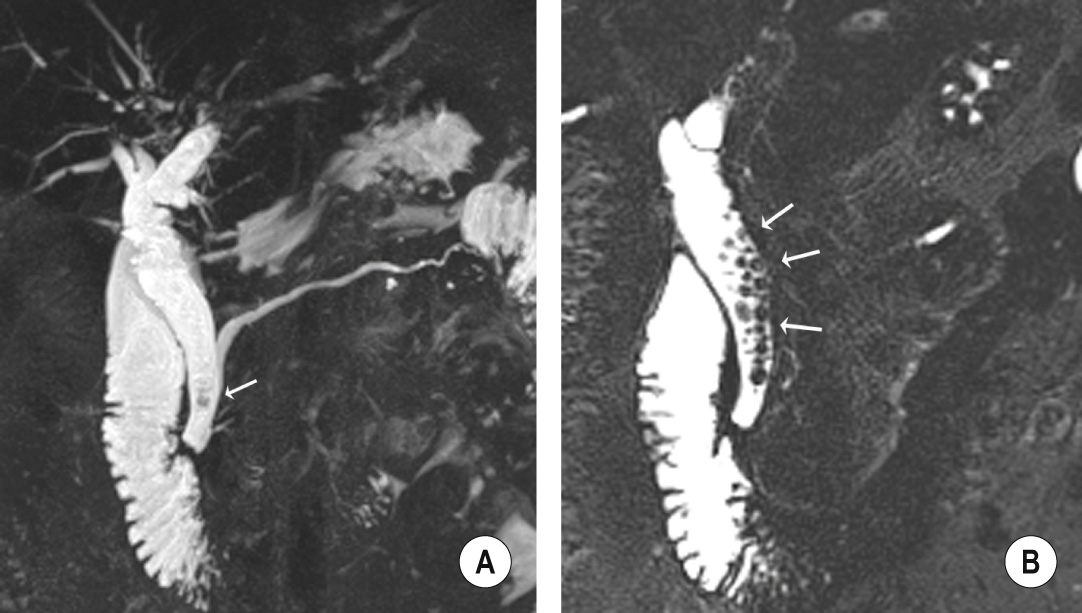

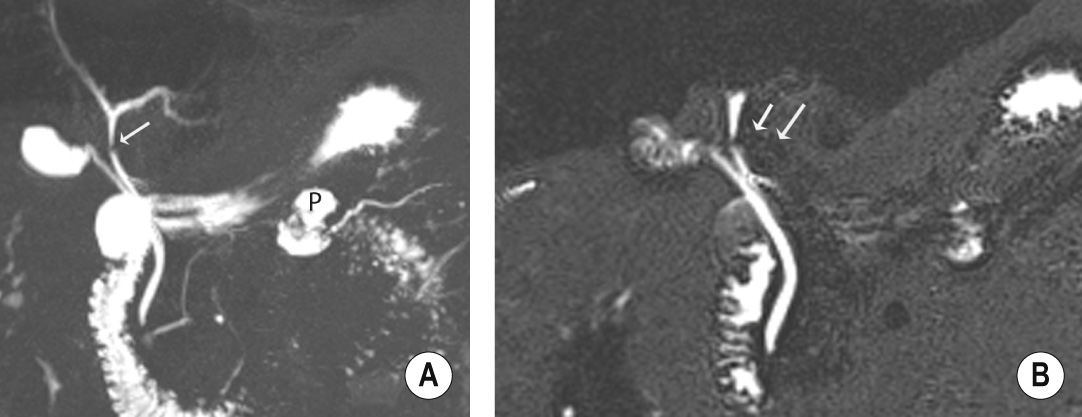
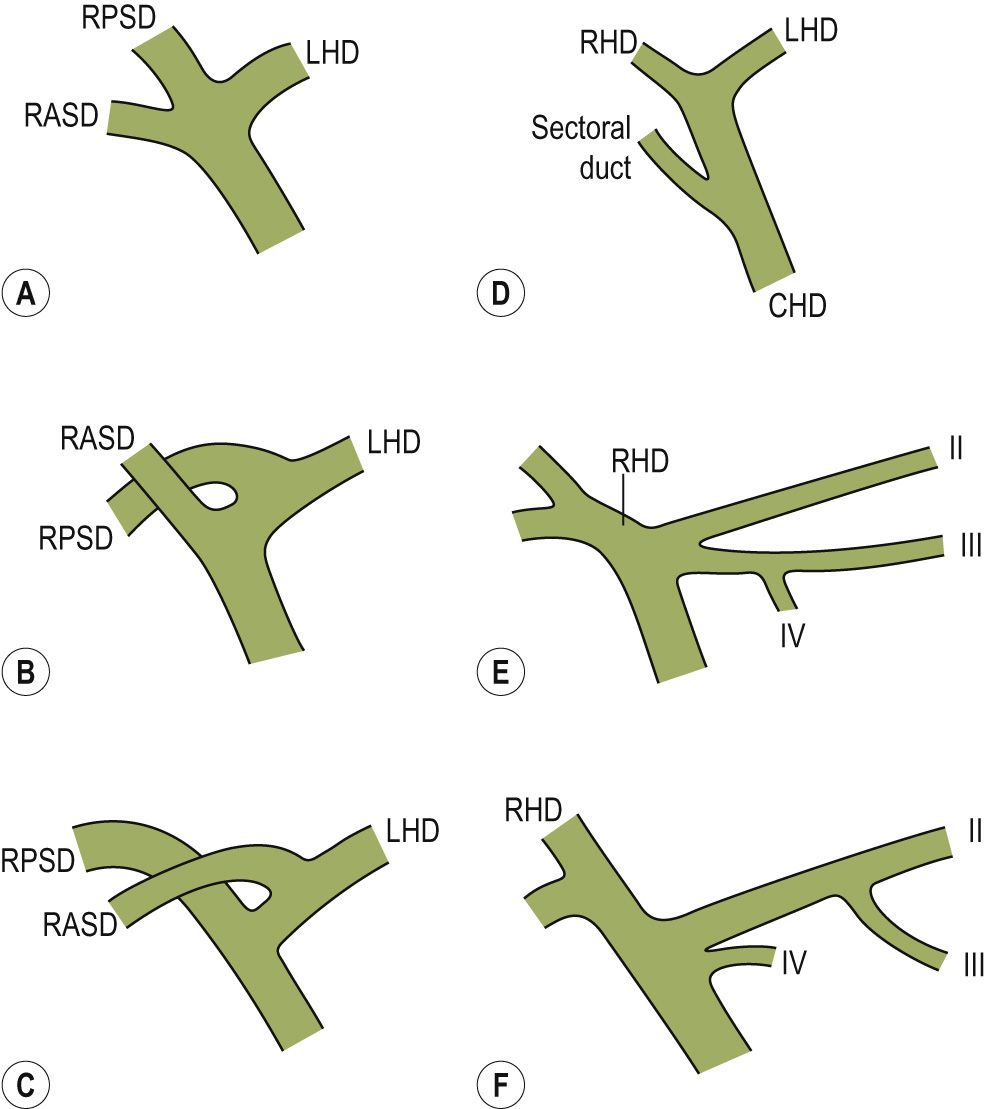
Stones present within the gallbladder – this affects 15% of the Western population (F>M) ▸ there is a small lifetime risk of developing a gallbladder carcinoma
Gallstone composition: cholesterol (70%) ▸ pigment stones composed of calcium bilirubinate (up to 30%)
Asymptomatic (80%) or presenting with biliary colic, acute or chronic cholecystitis, or obstructive jaundice
Only 10–15% of calculi are visible (if they are calcified) ▸ larger stones tend to be laminated
This has a sensitivity of > 95% for detecting gallstones ▸ gallstones appear as echogenic foci which cast acoustic shadows ▸ stone mobility is frequently demonstrated (unless it is impacted at the neck)
NB: a gallbladder polyp will be fixed, with no acoustic shadow and may demonstrate vascularity
‘Double-arc shadow’ sign: two parallel curved echogenic lines separated by a thin anechoic space with dense acoustic shadowing in a gallbladder full of stones
Only a minority of gallstones are visible ▸ these are hypodense, hyperdense or of mixed density
Reasons for non-visualization of the gallbladder: a previous cholecystectomy ▸ a non-fasting state ▸ an abnormal gallbladder position ▸ emphysematous cholecystitis ▸ a gallbladder full of stones
Biliary sludge: this is composed of calcium bilirubinate granules, cholesterol crystals and glycoproteins ▸ it is commonly seen with fasting states, critically ill patients, pregnancy and in those patients receiving total parenteral nutrition ▸ it resolves spontaneously in 50% of cases
Fine, non-shadowing dependent echoes ▸ small gallstones can be difficult to detect if they lie within any sludge
Sludge can be differentiated from a tumour by its mobility, lack of internal flow, and lack of an associated gallbladder wall abnormality
Blood (haemobilia) and pus (empyema) can appear similar to sludge (the clinical setting aids the diagnosis)
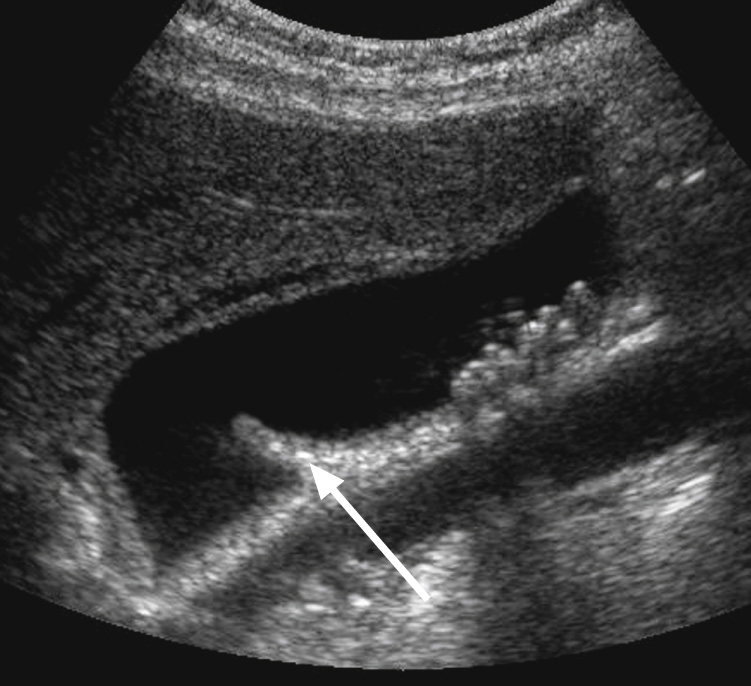
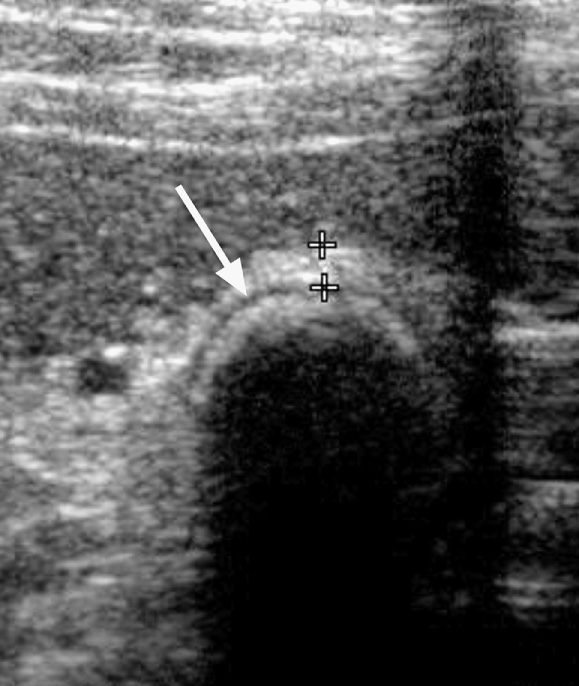
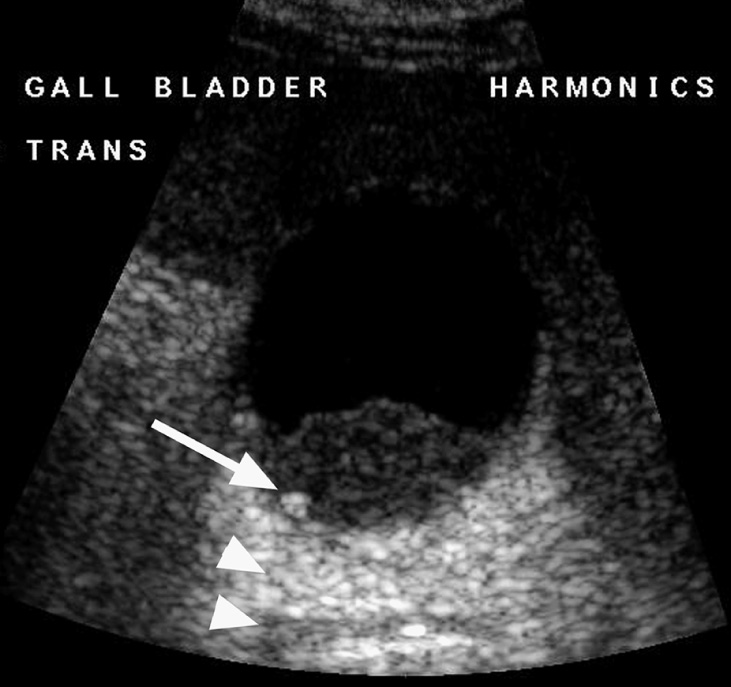
Stones within the bile duct
Primary (10%): arising within the bile duct (pigment stones)
Secondary (90%): stones that have passed from the gallbladder into the bile duct
Intrahepatic stone formation
This may occur with common duct stones but is more often associated with other pathologies: benign strictures ▸ primary sclerosing cholangitis ▸ recurrent pyogenic cholangitis ▸ Caroli's disease
Right upper quadrant pain ▸ obstructive jaundice ▸ pancreatitis
An intraductal echogenic focus needs to be demonstrated in both the longitudinal and transverse planes (± duct dilatation) ▸ a duct diameter <4 mm carries a high negative predictive value for choledocholithiasis (regardless of the gallbladder status)
Conditions mimicking a stone:
Intraductal gas: this has a linear nature and will be mobile
Haemobilia and sludge: this produces more diffuse echoes than a stone
Surgical clips: these will lie outside the duct lumen
Parasites: e.g. hydatid membranes
This is more sensitive than standard US (with a sensitivity and specificity >90%)
A ring density or soft tissue density within the bile duct and surrounded by bile (sensitivity 60–88% ▸ specificity >95%)
This has a high accuracy, with a reported sensitivity of up to 96% and a specificity of up to 98% ▸ it can diagnose stones that are <5 mm in diameter ▸ its main weakness is its reliance on a near-normal serum bilirubin
An intraluminal signal void visible in 2 thin-section orthogonal planes ▸ this has a high sensitivity (up to 94%) and specificity (99%) ▸ its quality is independent of the serum bilirubin levels
False negative: stones <5 mm
False positive: gas (gas will rise, stones are dependent) ▸ haemobilia ▸ flow voids
8–15% of patients who are under the age of 60 years and who have undergone a cholecystectomy have duct stones
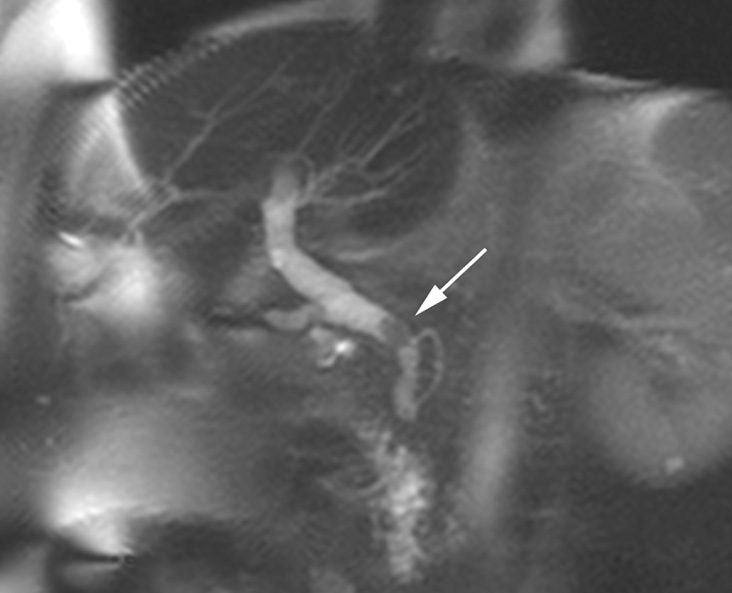
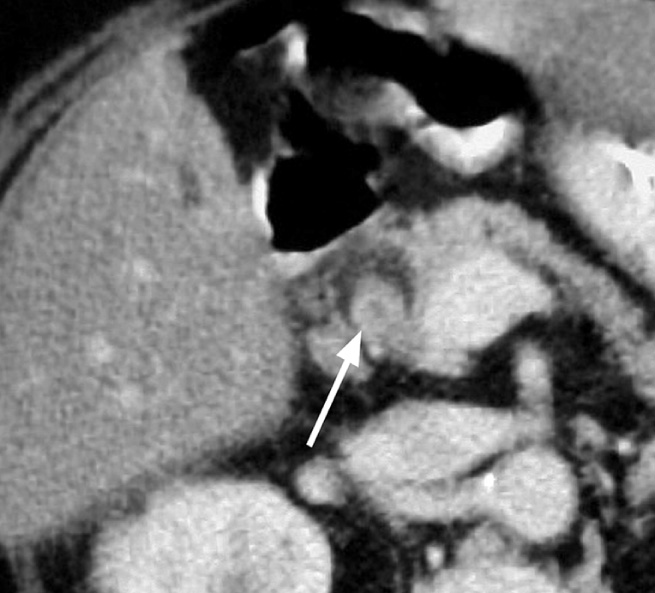
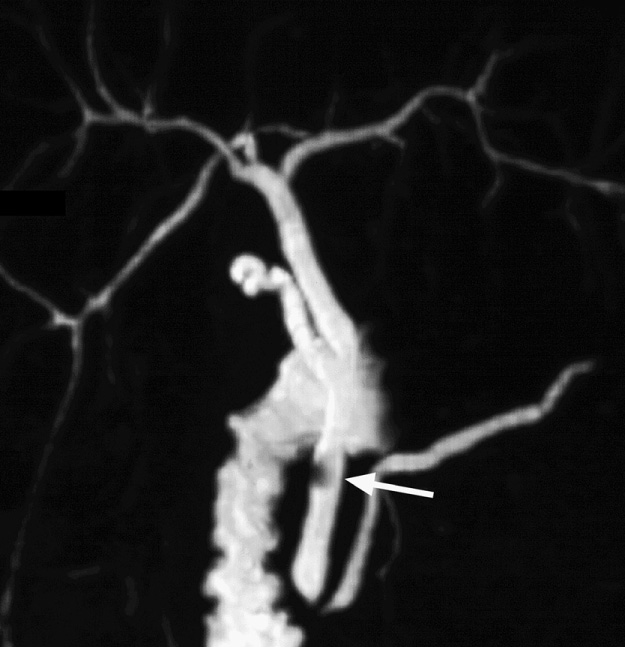
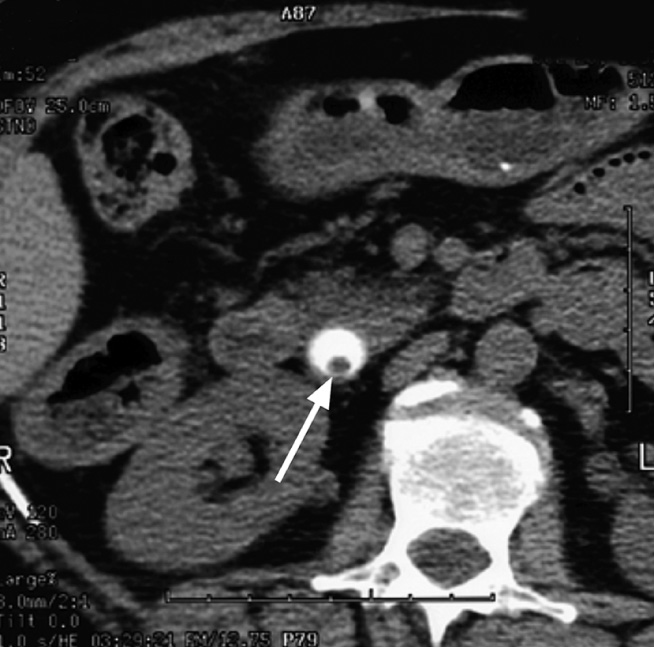
Gallbladder inflammation (which is secondary to gallstones in 90–95% of cases)
This is the best initial imaging modality ▸ the signs include:
A gallbladder wall thickness >3 mm ▸ gallbladder distension (>5 cm) ▸ pericholecystic fluid and gallbladder wall striations (± wall hyperaemia on Doppler) ▸ gallstones (common bile duct stones are suggested by abnormal liver function tests)
Fine echoes within the gallbladder may suggest the presence of sludge or pus (a gallbladder empyema)
Gallbladder wall thickening (>2 mm) ▸ subserosal oedema and gallbladder distension ▸ high-density bile ▸ pericholecystic fluid and inflammatory stranding within the pericholecystic fat ▸ variable enhancement of the gallbladder wall ▸ transient pericholecystic liver rim enhancement
Gallstones are only seen in a minority (as they are often isoattenuating to biliary fluid)
There is non-visualization of the gallbladder at 2–4 h after isotope administration (secondary to inflammatory cystic duct obstruction)
Complications: Gangrenous cholecystitis ▸ emphysematous cholecystitis ▸ empyema formation
Differential of gallbladder wall thickening: a non-fasted or a generalized oedematous state ▸ hepatitis ▸ pancreatitis ▸ gallbladder wall varices ▸ adenomyomatosis ▸ gallbladder carcinoma
Ischaemic necrosis of the gallbladder wall is a complication of acute cholecystitis
Irregularity or asymmetrical thickening of the gallbladder wall ▸ internal membranous echoes resulting from sloughed mucosa ▸ pericholecystic fluid
Gas within the wall or lumen ▸ discontinuous (±) irregular mucosal enhancement ▸ internal membranes (representing sloughed mucosa) ▸ a pericholecystic abscess
Gallbladder perforation: this is seen in 5–10% and is suggested by pericholecystic fluid and localized gallbladder wall disruption
The presence of intramural (± intraluminal) gas due to gas-forming organisms ▸ it accounts for 1% of cases of acute cholecystitis, and has a relatively high mortality rate
50% of patients are diabetic (M>F) ▸ gallstones are only seen in <50% of patients
Focal or diffuse bright echogenic lines (representing intramural gas) ▸ a curvilinear brightly echogenic band with acoustic shadowing seen within a non-dependent portion of the gallbladder (representing intraluminal gas)
Small foci of intramural gas may cause ring-down artefacts and mimic adenomyomatosis
Intramural (± intraluminal) gas
Gallbladder inflammation in the absence of gallstones ▸ this is usually found in critically ill patients
Other causes: prolonged fasting ▸ parenteral nutrition ▸ AIDS ▸ diabetes ▸ chemotherapy
Gallbladder distension ▸ gallbladder wall thickening ▸ echogenic contents (± sloughed membranes or mucosa) ▸ pericholecystic fluid
Gallbladder aspiration may aid the diagnosis ▸ localized gallbladder tenderness is a good predictive sign but it is difficult to assess
Chronic inflammation and thickening of the gallbladder wall which is secondary to gallstones
A contracted gallstone-containing gallbladder ▸ intramural epithelial crypts (Rokitansky–Aschoff sinuses)
Unexplained biliary-type pain with no clear clinical, pathological or radiological criteria for diagnosis
This may show gallbladder wall thickening (but no gallstones)
This can assess the gallbladder contractility (following an IV infusion of cholecystokinin) ▸ an ejection fraction <35% indicates gallbladder dysfunction
A rare inflammatory disease of the gallbladder characterized by a focal, diffuse destructive inflammatory process with accumulation of lipid-laden macrophages ▸ it may simulate a malignancy radiologically and pathologically
Cholecystitis or biliary obstruction (Mirizzi's syndrome)
Gallbladder wall thickening (focal or diffuse) ▸ the majority have gallstones (± perforation, abscess, or fistula formation)
An associated gallbladder carcinoma is seen in a minority of patients
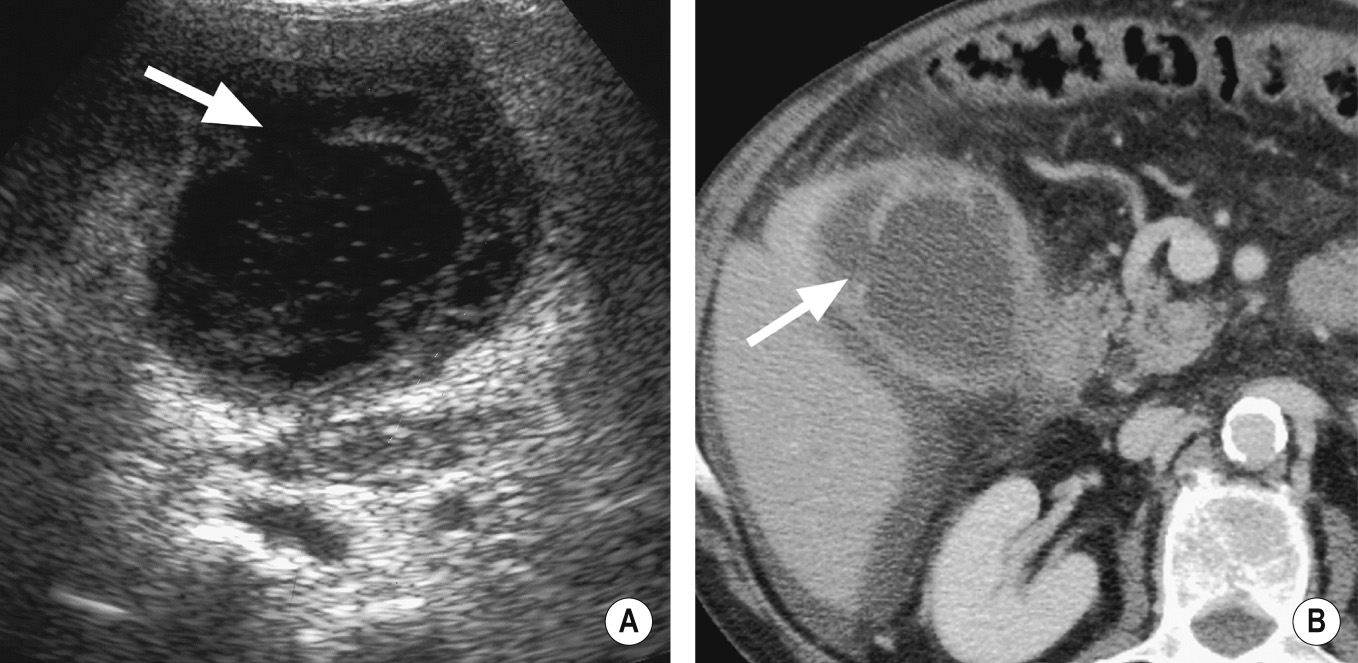
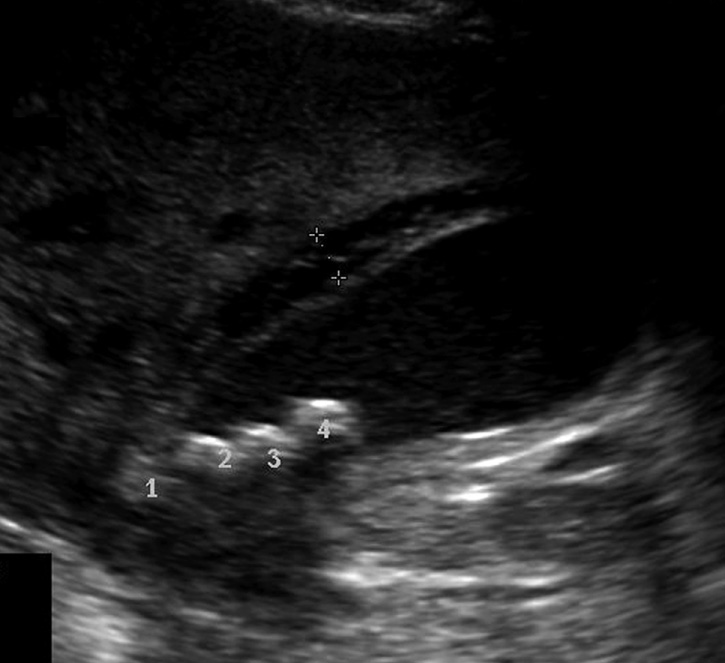
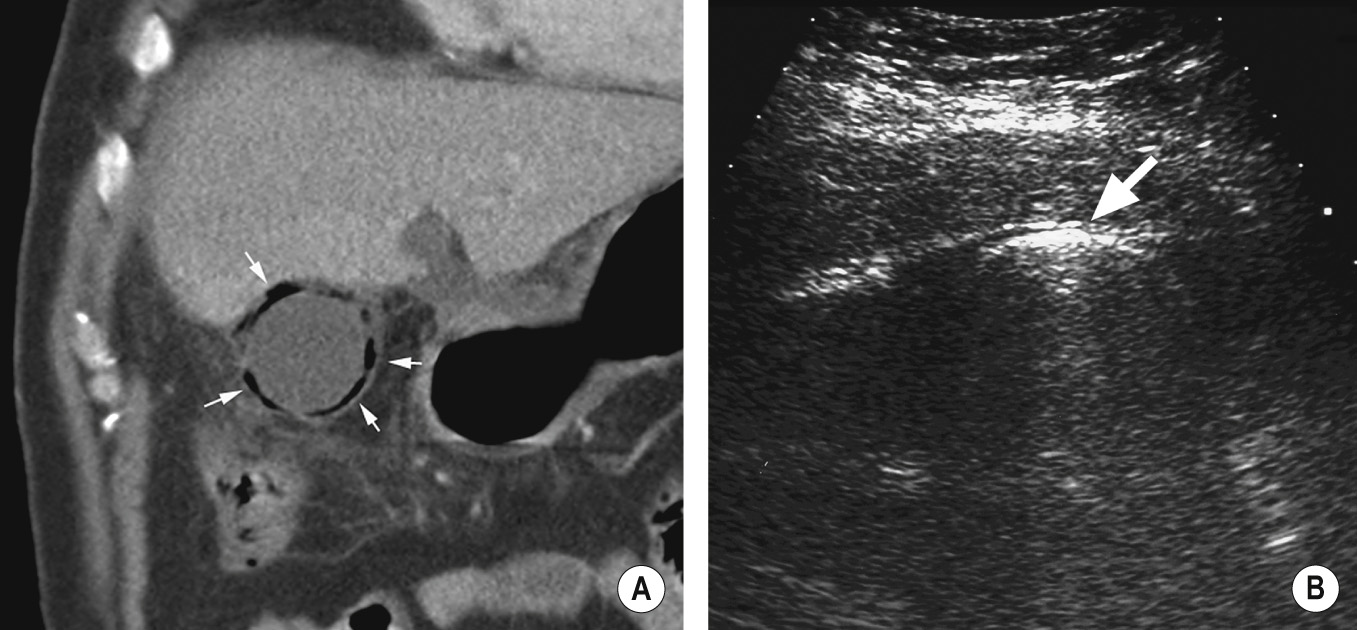

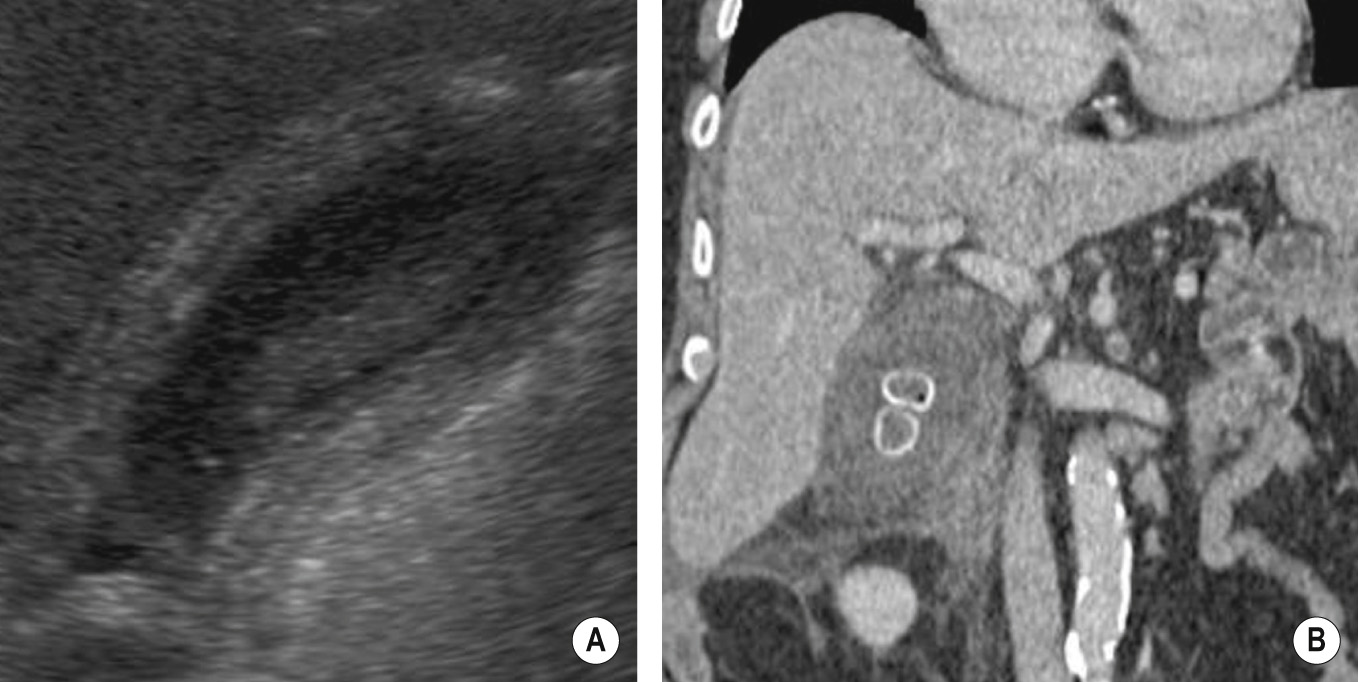
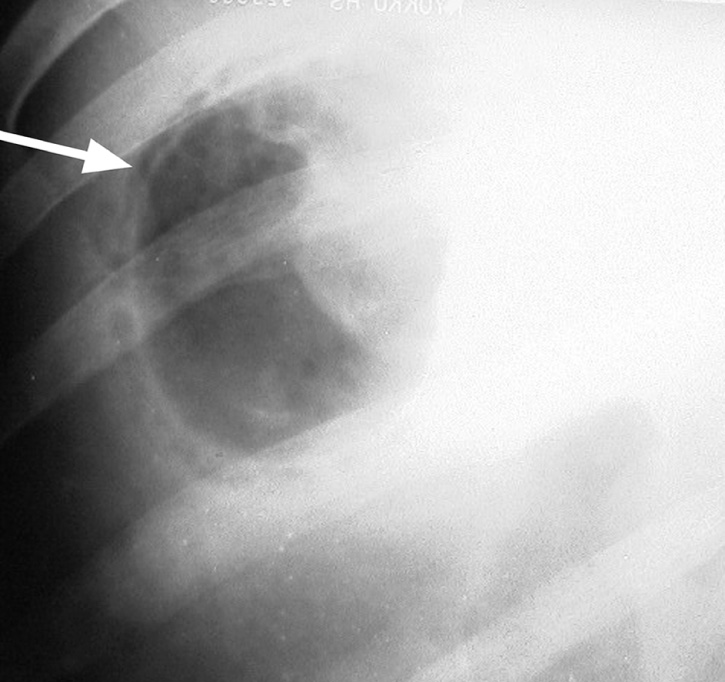
Become a Clinical Tree membership for Full access and enjoy Unlimited articles
If you are a member. Log in here